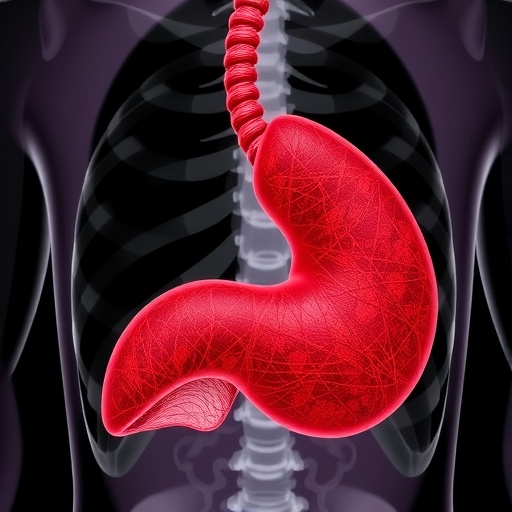In recent years, the scientific community has made significant strides in understanding rare genetic disorders, particularly those affecting the liver. One such disorder known as Progressive Familial Intrahepatic Cholestasis (PFIC) has emerged as a critical area of study, especially with the discovery of new genetic mutations linked to its progression. Researchers from various institutions have recently focused on PFIC type 5, a subtype characterized by a specific mutation in the NR1H4 gene, revealing crucial insights that could change how we approach this challenging condition.
PFIC encompasses several genetic disorders that result in cholestasis, a condition where bile cannot flow from the liver to the duodenum. This malfunction leads to the accumulation of toxic bile acids in the liver, causing severe liver damage and other systemic effects. Recent studies have elucidated the complexities of PFIC, exploring the genetic basis of this disorder and the physiological ramifications associated with mutated genes. Among these, the NR1H4 gene has gained attention for its role in bile acid homeostasis and hepatic function.
The NR1H4 gene encodes a nuclear receptor known as the Farnesoid X Receptor (FXR), which plays a pivotal role in regulating bile acid metabolism and maintaining liver health. Mutations in this gene can disrupt the normal functioning of the FXR, leading to abnormalities in bile production and secretion. The implications of such disruptions are profound, often resulting in early-onset liver disease that can necessitate liver transplantation for affected patients. Understanding this pathway is crucial for developing targeted therapies and improving patient outcomes.
In a groundbreaking study published in BMC Pediatrics, researchers detailed a novel mutation in the NR1H4 gene responsible for PFIC type 5. This study not only highlighted the mutation’s specific genetic profile but also emphasized the clinical manifestations associated with this unique form of cholestasis. The implications of such findings extend beyond merely academic interest; they raise questions about early diagnosis and potential gene therapy interventions that could alleviate or even rectify the disorder’s progression.
The clinical aspects of PFIC type 5 are marked by a range of symptoms, including pruritus, jaundice, and ultimately liver failure. The severity and onset of symptoms can vary widely among affected individuals, complicating the clinical picture and making timely diagnosis challenging. Pediatricians and hepatologists often face difficulties in distinguishing PFIC from other liver diseases, underscoring the need for precise genetic testing.
Within the context of this study, the importance of genetic testing becomes abundantly clear. Identification of the specific NR1H4 mutation enables clinicians to provide a more accurate diagnosis and prognosis for their patients. Moreover, family members may also benefit from testing, allowing for early intervention in individuals at risk. The use of next-generation sequencing technology has revolutionized how clinicians approach genetic disorders, streamlining the diagnostic process and enhancing patient care.
The exploration of potential therapeutic avenues for PFIC type 5 is equally exciting. With the identification of the NR1H4 mutation, researchers are now exploring gene therapy as a viable approach to mitigate the effects of the mutation. By delivering a functional copy of the gene or employing strategies to correct the mutation, it may be possible to restore normal FXR function. This innovative approach could pave the way for new treatments that target the root cause of PFIC, rather than merely managing symptoms.
In addition to genetic therapy, understanding the biochemical pathways affected by the NR1H4 mutation offers avenues for pharmacological interventions. Specific compounds that enhance FXR activation or promote alternative pathways in bile acid metabolism are currently under investigation. This multifaceted approach to treatment could significantly alter the management strategies employed by healthcare providers, potentially leading to improved quality of life for patients.
The burden of PFIC, particularly in its many subtypes, extends beyond the medical realm, affecting families and communities. Families faced with a diagnosis of PFIC often endure emotional and financial stress, navigating complex healthcare systems in search of answers and effective treatments. Advocacy and support groups play a crucial role in connecting affected individuals and families, fostering a sense of community and shared experience. Greater awareness and education about PFIC are essential to promote proactive healthcare strategies and ensure that families receive the support they need.
As research continues to evolve, the potential for collaboration across disciplines cannot be overlooked. Geneticists, hepatologists, pediatricians, and researchers must work in tandem to unravel the complexities of PFIC and other genetic disorders. The incorporation of diverse expertise will only enhance our understanding and drive forward new therapeutic strategies that could drastically improve patient outcomes.
The story of PFIC type 5, specifically the mutations within the NR1H4 gene, serves as a reminder of the power of scientific inquiry and collaboration. Each breakthrough brings us closer to understanding not just the genetics of liver disease, but also the broader implications for human health. As we unlock the mysteries of our genome, we stand on the precipice of a new era in medicine—one where genetic disorders could finally receive the attention and treatment they rightfully deserve.
Ultimately, the research on PFIC type 5 epitomizes the intricate relationship between genetics and clinical practice. As the scientific narrative unfolds, it is our collective responsibility to leverage this knowledge to make meaningful impacts on patient care and public health. The aspiration is clear: to foster a future where liver diseases like PFIC are not just manageable conditions, but preventable and treatable disorders that allow individuals and families to thrive.
Subject of Research: Progressive familial intrahepatic cholestasis type 5 due to a novel mutation in the NR1H4 gene.
Article Title: Progressive familial intrahepatic cholestasis type 5 due to a novel mutation in the NR1H4 gene.
Article References:
Belhadj, R., Maaloul, I., Besghaier, W. et al. Progressive familial intrahepatic cholestasis type 5 due to a novel mutation in the NR1H4 gene. BMC Pediatr 25, 870 (2025). https://doi.org/10.1186/s12887-025-05980-3
Image Credits: AI Generated
DOI:
Keywords: Progressive familial intrahepatic cholestasis, NR1H4 gene mutation, liver disease, genetic disorders, gene therapy, bile acid metabolism, Farnesoid X Receptor.




